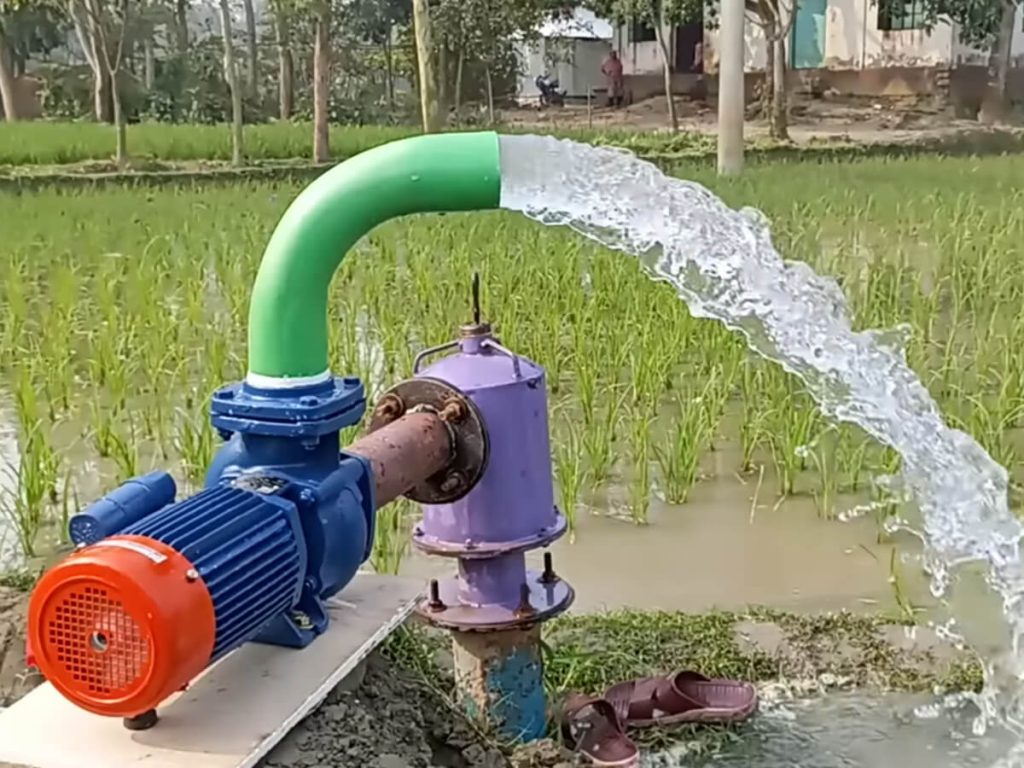Meet The Must-Have Tool For Irrigation – Centrifugal Water Pump
Efficient irrigation is essential in sustaining agriculture due to climate change and water scarcity. By utilizing advanced technologies such as drip irrigation and precision watering, farmers can maximize crop yields while minimizing water usage. Not only does this lead to more sustainable agricultural practices, but it also helps alleviate water stress in many parts of the world. However, centrifugal water pumps play a vital role in irrigation by efficiently distributing water to crops, ensuring optimal growth and yield. By harnessing the force of rotation, centrifugal pumps can push water with tremendous power, transporting it efficiently across vast fields.
About Centrifugal Water Pump
Centrifugal water pumps are essential in mining, industrial, commercial, and residential applications. It is a device that relies on the centrifugal force generated when the impeller rotates to transport liquid. While they are typically used to move clean water, these pumps can also effectively handle other fluids such as chemicals, sewage, and slurries. Centrifugal pumps include vertical, horizontal, single-stage, multi-stage, single-suction, double-suction, self-priming, and different types. It is widely used in industrial and urban water supply and drainage, energy, metallurgy, chemical industry, textile, papermaking, petroleum, electric power, papermaking, food, pharmaceutical, and synthetic fiber sectors.
Furthermore, its simple design and robust operation make it suitable for different environments and applications. Whether an agricultural irrigation system or a cooling system in an industrial environment, centrifugal water pumps provide reliable performance in different situations.
Features: The characteristic of the centrifugal water pump is that it relies on the high-speed rotation of the impeller to obtain more incredible kinetic energy from the fluid and relies on the change in the spiral section at the outlet of the flow channel to convert the kinetic energy of the liquid into pressure energy. The flow of water in the impeller is mainly affected by centrifugal force.
Working Principle: The working principle is to convert the energy generated by the motor into kinetic energy, which is used to move water through the pump. The key element of a centrifugal pump is the rotating impeller, which generates high-speed water flow. This rapid movement creates centrifugal force, which pushes water toward the pump outlet with tremendous pressure.

Advantages of centrifugal water pumps in irrigation
- The ability of centrifugal water pumps to generate high flow rates and handle large volumes of water makes them indispensable in agricultural settings.
- Centrifugal pumps reduce manual labor and increase the irrigation system’s overall productivity, ultimately contributing to sustainable and profitable agricultural practices.
- With their reliable performance and ability to adapt to various irrigation needs, centrifugal water pumps have become essential in modern agricultural operations worldwide.
- Centrifugal water pumps have lower maintenance requirements compared to other pump delivery solutions. It is easier to maintain and operate due to fewer moving parts and simple design.
- It is efficient and cost-effective, providing a practical solution for farmers looking to maximize their resources.
Centrifugal water pump maintenance tips
Regular inspections: Regularly observe whether the pump pressure and motor current are normal and stable, whether there are any abnormal sounds or vibrations in the operation of the equipment, and deal with any problems promptly. Always keep the pump and surrounding environment clean and tidy, and swiftly eliminate running, popping, dripping, and leaking issues.
Clean the pump and filter: Clean the pump and filter regularly to prevent dirt and debris from blocking the pump’s inlet and outlet and affecting the pump’s regular operation. Before cleaning, cut off the power supply and wait patiently for the pump to stop running.
Lubricating pump bearings: Regularly add an appropriate amount of lubricating oil or grease to the pump bearings as needed to ensure lubrication and regular operation.
Check the seals: Regularly check the pump seals, such as shaft seals, packing seals, etc., to ensure that the sealing effect is good and to avoid leakage.
Check the motor and electrical parts: Regularly check the engine and electrical parts of the pump, including voltage, current, insulation, and other indicators, to ensure their regular operation.
Maintain the cooling system: For pumps that need cooling, clean the cooling system regularly to ensure that the cooler and water lines are smooth to avoid overheating.
Regularly calibrate and check instruments: For pumps equipped with instruments, regularly calibrate and check the accuracy and reliability of the instruments to ensure that the pump’s operating status is correctly read and monitored.
As we look toward the future of sustainable agriculture, it is clear that adopting centrifugal water pumps will meet the growing demands of food production while protecting precious water resources. These pumps can move large volumes of water at high speeds, significantly reducing the time and energy required for irrigation. By efficiently distributing water across fields, farmers can maximize crop yields while minimizing water waste. Centrifugal water pumps’ efficiency, adaptability, and reliability make them indispensable assets in every field where smooth fluid transfer is crucial. The durability and low maintenance requirements of Walker pumps make them a cost-effective solution for long-term irrigation operations. Contact us to get the factory price!
